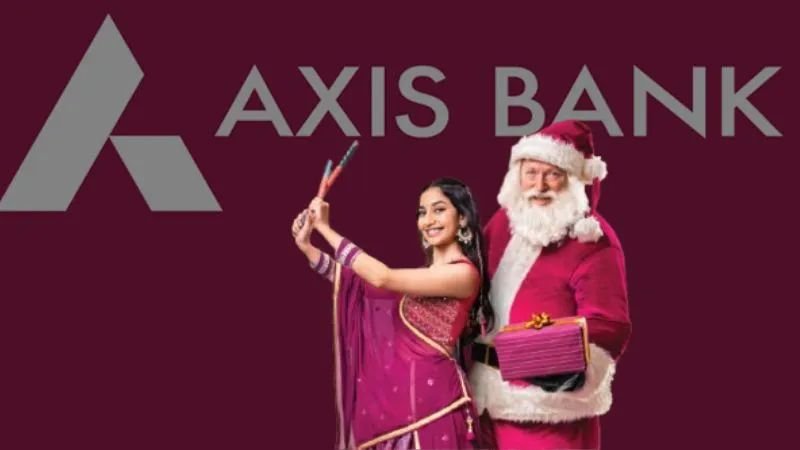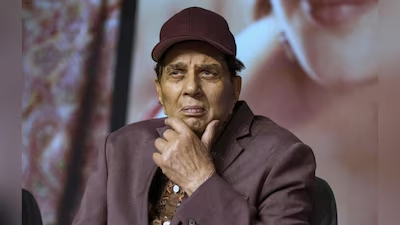
In less than 48 hours, Axis Bank’s festive ad featuring the Axis Bank Navratri ad controversy scene became a lightning rod for controversy, trending #BoycottAxisBank, #SantaClausatGarbawith over 50,000 mentions on X and igniting a heated nationwide debate.
As India entered its colourful festive season in September 2025, brands rolled out campaigns to capture the celebratory spirit. Axis Bank Navratri ad controversy, launching its Dil Se Open Celebrations 2025 campaign — aimed at promoting credit cards and EMI offers running through Navratri, Diwali, and Christmas. But instead of applause, what followed was one of the most talked-about controversies of the year.
The reason? A 20-second commercial showing Santa Claus dancing in the middle of a traditional Navratri garba circle. While meant to carry the message “Sirf ek festival nahi, poore festive season chalega” (Not just one festival, the entire festive season will go on), it was perceived by many as a misstep in cultural sensitivity.
Navratri is more than a holiday — it is a sacred tradition observed by over 200 million Indians every year. Devotees fast, worship, and dance for nine nights to pay tribute to Goddess Durga. Garba is more than entertainment — it is devotion, community, and cultural identity. To many, inserting Santa Claus, a commercialised Western figure rooted in Christian tradition, into this sacred celebration was disconcerting.
When Santa Claus Stormed Garba: How Axis Bank’s Festive Ad Turned Into a Cultural Firestorm Overnight
The September 22, 2025 launch ad opens with a lively garba celebration under colourful lights, devotional music setting the tone. The energy reflects traditional Navratri vibrance — devotees clad in vibrant chaniya cholis and kediyus, clashing dandiyas in joyous unison. Then, abruptly, Santa Claus enters — red coat, white beard, gift bag in hand — breaking the circle with a loud “Ho Ho Ho.”
The intent, as explained by Axis Bank’s Chief Marketing Officer, Anoop Manohar, was to “reflect India’s lived reality of celebrating multiple festivals.” Lowe Lintas, the creative agency behind the ad, described Santa as a “playful visual disruptor.” But to many viewers, it was cultural overreach rather than creativity.
Within hours of its release, the ad amassed over 300,000 views and became a lightning rod for criticism. Screenshots and outrage spread rapidly across social media, and within 24 hours, #BoycottAxisBank had over 50,000 mentions. Axis Bank quietly removed the ad, but the debate only intensified.
Cultural commentators pointed out that the ad stripped Navratri of its devotional essence and reduced it to a backdrop for a cross-festive marketing gimmick. In a society where religious and cultural identity is deeply rooted, such an insertion was bound to trigger backlash.
How Social Media Turned Axis Bank Navratri ad controversy a Viral Storm of Outrage, Boycott Calls, and Cultural Debate
Across platforms such as X (formerly Twitter), outrage poured in from devotees, cultural commentators, journalists, and activists. The reactions were swift and sharp:
- The Jaipur Dialogues: “Axis Bank is Celebrating Navratri with Santa Claus. Heights of demeaning a Hindu Festival. Retract this Ad immediately or face Boycott Calls!”
- Journalist Sanjay Dixit: “Hello @AxisBank – Remove this ad or I will close my 4 bank accounts with you.”
- Activist Ritu Rathaur: “Axis Bank has turned the Hindu festival of Navratri into the Christian festival of Santa Claus… This is a very sinister campaign.”
These comments were echoed by thousands more on the Axis Bank Navratri ad controversy. A recurring question emerged: Why are Hindu festivals the only ones targeted for such experimental cultural mash-ups? Many argued that similar experiments would not be tolerated if other religious festivals were in focus.
While some called it a “fun multicultural nod,” those voices were in the minority. A 2024 ASCI report highlighted that 70% of controversial ad cases in India involve religious or cultural content, underscoring the sensitivity surrounding religious festivals and advertising.
Deep Dive: Why Navratri Holds a Special Place in India’s Cultural Fabric
To understand the backlash, one must understand Navratri itself. For over 200 million Hindus worldwide, Navratri is not merely a celebration — it is a spiritual journey. Over nine nights, devotees honor Goddess Durga, symbolizing the victory of good over evil. Garba, performed during these nights, is more than a dance; it is a devotional offering, a living tradition passed down through generations.
To insert Santa Claus — a commercialised Western figure with roots in Christian tradition — into this sacred ritual was perceived by many as a breach of cultural sanctity. The act was interpreted by critics as prioritising marketing gimmicks over the authenticity of faith-based traditions.
A Decade of Disruption: How Festive Advertising Has Repeatedly Sparked Cultural Backlash in India
Axis Bank’s ad is not an isolated case. Over the past five years, several brands have faced backlash for blurring cultural lines in festive advertising:
- 2020 – Tanishq’s Diwali Ad: Pulled after criticism for showing an interfaith ceremony accused of promoting “love jihad.”
- 2021 – FabIndia’s ‘Jashn-e-Riwaz’: Criticised for “Islamicising” Diwali due to its Urdu title.
- 2023 – Bharat Matrimony Holi Ad: Called “anti-Hindu” for its feminist commentary during a sacred festival.
- 2024 – Manyavar Wedding Ad: Questioned the tradition of kanyadaan, sparking protests.
- 2018 – Coca-Cola India Diwali Campaign: Removed after backlash for perceived appropriation of religious imagery.
These cases reveal a deeper pattern — a tension between brand creativity and religious sentiment. In India, where festivals contribute significantly to social and cultural life, missteps can quickly escalate into national controversies.
Festive campaigns matter because they are tied to ₹1 trillion in annual consumer spending in India, with 40–50% of annual brand budgets dedicated to them. But the lesson is clear: blending sacred rituals with unrelated imagery without sensitivity can provoke backlash far larger than the brand benefit.
Axis Bank Navratri Ad Controversy: The Regulatory, Cultural, and Social Implications of Axis Bank’s Navratri Ad
Axis Bank has yet to issue a formal apology beyond removing the ad. But the matter has drawn attention from regulatory and cultural commentators. The Advertising Standards Council of India (ASCI) prohibits ads that hurt religious sentiments, ridicule sacred practices, or incite intolerance. Violations can escalate to criminal cases under IPC Section 295A. Social media users have even tagged the RBI and PMO, suggesting possible official complaints.
This incident underscores a larger lesson for brands: festive campaigns must undergo cultural audits and sensitivity reviews before launch. The reputational cost of ignoring this is not just backlash — it can mean loss of trust and long-term brand damage.
Respecting Tradition in the Age of Commercialisation: Why Brands Must Be Careful When Remixing Sacred Festivals
Navratri is nine nights of devotion, dance, and prayer, commemorating the victory of good over evil. For many, it is a deeply spiritual experience. Axis Bank’s Santa Claus cameo turned a sacred celebration into a flashpoint for controversy — and sparked a larger question about whether Hindu festivals are being diluted in the name of inclusivity.
India’s pluralism demands understanding, respect, and authenticity when brands innovate. Cultural creativity must tread the fine line between celebration and appropriation. As the festive season unfolds, brands have a choice: innovate with cultural sensitivity or risk becoming case studies in how not to celebrate tradition.
FOR MORE BLOGS – beyondthepunchlines.com

 Add to favorites
Add to favorites








